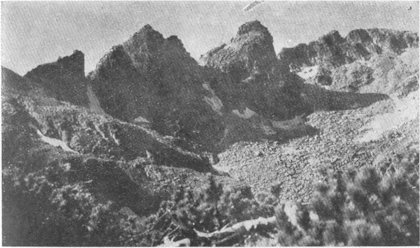
Rupite, jagged Rilo teeth
CHAPTER IX
Bulgarians at Play
The principal outdoor amusement of the Bulgarians is mountain hiking, which they call tourism. This affords them the most natural and joyous expression of their impulses and inclinations and satisfies the greatest number of people of both sexes and of all ages.

Rupite, jagged Rilo teeth
However, there are also two other popular forms of recreation and diversion. One is sport and the other organized gymnastic drills or physical training. Sport is a new creation and not so very well developed. There are tennis, horse racing, skiing, motor cycle and automobile racing, light athletics and football, of which the most popular is football. This game was really introduced after the world war as a national sport but already a number of good teams have been formed and many excellent players developed. The football clubs are organized in a national federation which arranges inter-club, inter-city and international games. Every year the best teams in the country hold a tournament for the royal cup and in addition there are a large number of unofficial contests. Most youths' organizations, associations and societies have teams and all Bulgarian boys are interested in the sport. On practically every holiday there are well attended games and the leading players are the idols of most of the youth. - When a "half" or game ends in any of the larger cities the playing field is instantly covered by a black flood of delirious youngsters, sweeping from every direction toward the players of the home team in order to touch them or at least shout "Bravo, Tsits" or "Attaboy, Naida". Of course the agile Bulgarian urchins have their own perfectly good word for "attaboy".
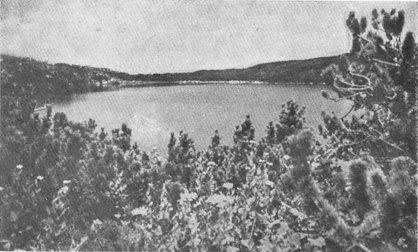
Sara Geol (Yellow Lake)
However, in spite of this great interest in football and the loyal support which the public gives the clubs, the Bulgarians have not been notably successful at it and have not won a particularly distinguished record in international games. They lack trainers and sport tradition and team work. It has not become enough of an art to inspire all the players and clubs to subordinate personal aspirations to national victory.
In addition, the Bulgarian does not really give his whole soul to this game. It is a little bit foreign to him. Not quite Slavic enough. Too simple, shallow and devoid of meaning. It does not offer a medium for the expression of all his inclinations.

Peak Koupena
The Bulgarian does not go wild merely over a furious striving for victory but wants to know what the victory is about and the advantages it will bring. Just kicking a leather ball about does not seem to answer all he requires from a diversion. He wants to put a bit of soul and art and grace and meaning into it; to join it up with some cause or doctrine or virtue. That is why so many thousands of Bulgarians for many years gave such enthusiastic support to the "Younack" organization. "Younak" means hero, champion, athlete. A "younak" in Bulgarian song and history is a strong, bold, fearless youth, who could lick a dozen Turks and escape from a score of pursuers, without even getting tired. A "younack" is the kind of a young men every boy dreams of becoming.
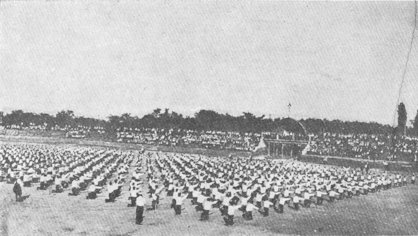
The "Yonnacks" performing
The name is Bulgarian but the origin of the specific form of organized gymnastics found in Bulgaria is Czechoslovakia, where "Younacks" are called "Sokols". A "sokol" is a falcon but in South Slav folk poetry and legends the word is used for national heroes, who defy tyrants, live in the mountains, strike quickly and are ever ready to risk their lives for their people. There was no word which the old Serbian singers of brave deeds so much enjoyed applying to their heroes as "sokol", no name which so aroused the affection and admiration of the listeners. Every father hoped that his son would grow up to be like a "sokol" and every budding maiden asked God to give her a "sokol" as lover.
So when the Czech patriot. Dr. Miroslav Tirsch, founded a youth's organization in Prague in 1865 for the purpose of arousing the young Czechs against their Austrian masters, of imbuing them with a flaming spirit of patriotism, of drilling and organizing them, of improving their bodies and of actually preparing them for physical resistance it was natural for him to give the name "sokol" to his movement. Tirsch and his associates wanted to mobilize the Czech youth against Austrian domination and there was no more appropriate appellation with which to arouse the young rebels than "sokol", a mysterious, legendary title, signifying bravery, sterling character, perfect physique and revolt.
Stark Rilo crags
The movement spread very rapidly in Czechia developing into a school of patriotism for a whole nation, and it proved to be very suitable to the Slav temperament. It revived national history, emphasized nobility, fidelity and sacrifice for others, subjected every one participating in it to physical drills, imposed a rigid discipline, fostered artistic expression and creation and satisfied the social inclination of young people who wanted to do things together. It was also international in its scope, soon spreading to other Slavic lands and engendering a vivid, glowing sentiment of Slav solidarity. In addition, it was very inclusive in its composition, enlisting in the same ranks boys and girls, children and their parents. It was for little tots, youth and adults. And one of its most attractive features consisted of its dramatic aspects: it brought the "sokols" before vast audiences, arranged imposing parades and gave striking pageants. Nor did it lack the spirit of contest, and rivalry — it was not a general scramble and rushing about like football, to be sure, but prizes and honors were given to the "Sokols" and "Sokol" units performing in the most artistic manner or rendering the best music or executing the most perfect figures.
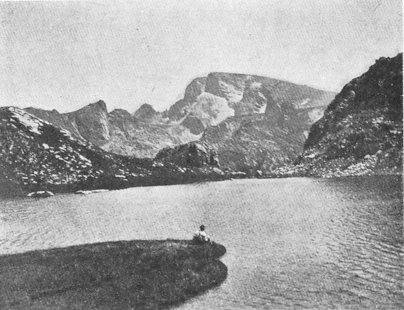
Maleovska Lake hiding behind Rilo peaks
In a word, the movement was nationalistic, international, cultural, dramatic, moral, serious and challenging, requiring the individual both to lose himself in his unit and to exert himself to the utmost. "Sokol" activities consisted of drills, physical exercises, the execution of many beautiful and intricate figures, the swinging of clubs, waving of wands, dancing and performing on parallel bars and "horses" as well as of singing in chorus and playing in bands and orchestras. There were also many excursions to woods, mountains, distant cities and foreign lands, writing of books and publishing of periodicals. A not insignificant feature of the movement were the special uniforms worn by the "Sokols". A thousand bare armed, white shirted, blue trousered men performing in union on a field and an equal number of red kerchiefed, white bloused, khaki skirted women marching, wheeling, turning, stooping, jumping, waving their arms, bending to right and left, throwing themselves prostrate, all in perfect tact is an impressive spectacle.
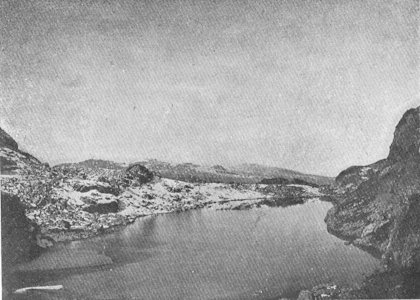
A Rilo lake
Foto Iv. Ivanoff
Naturally, this movement, answering so fully to so many needs of an awakening people, appealed to the Bulgarians who received it in a somewhat different form from Switzerland. It was introduced into the country in 1894 under the name of "Younack Societies" by ten Swiss instructors and soon spread to all parts of the land. A National "Younack" Union was formed in 1898 which in the course of time has come to number 154 branches with 37,822 members. The movement never became as popular in Bulgaria as in Czechia and has now passed the heyday of its vogue, but it is still an outstanding athletic organization. Scores of thousands of men, women and youth still enjoy donning their yellow green trousers or skirts, their red shirts and sheepskin caps and parading to the sound of martial music. It has engendered discipline, loyalty and team work in Bulgaria as in other Slav lands and developed physical endurance, elasticity, agility and skill.
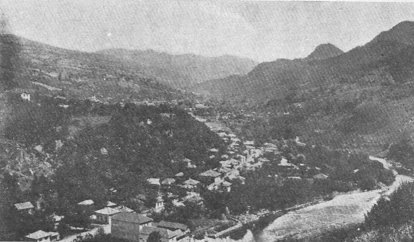
Foto Tabakoff
The town of Teteven strung down a mountain valley
But it does not enjoy the popularity nor arouse the enthusiasm that are associated with "tourism". The "Younack" movement is too formal and rigid, too much bossed by old people and too official; it is somewhat lacking in fire, spontaneity and freedom; it does not inspire the untrammeled exhilarant joy of a free tramp into the woods nor is it as alluring and adventurous as a night in the mountains. Tourism is the most natural and joyful of all Bulgarian amusements and has the most unreservedly consecrated devotees; it has called forth a more willing and fruitful self-sacrifice than any other Bulgarian pastime.
Of course it is not peculiarly Bulgarian, for the most classic expressions of tourism are found in Austria, Switzerland and Slovenia, while the youth of Germany are noted the world over for the way they wander in groups through their fatherland. The love the Swiss and Austrians have for their mountains, the songs they sing in them and concerning them, the care they give to them and the human relations they maintain with them have strongly impressed many Bulgarians travelling abroad, and served as the first organized impetus toward Bulgarian touring. Nevertheless mountain hiking here is almost entirely a spontaneous and indigenous movement. It has sprung from the heart of a people awakening to the fact that they live in a very beautiful land.
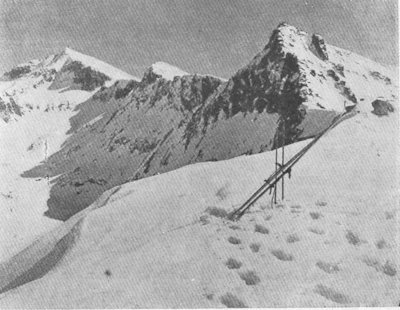
Foto Tasseff
Mount Moussalla, the highest peak in the Balkans
One of the first to be impressed by the splendor of Bulgarian mountains, the grandeur of her precipices, the eloquent, impressive silence of her peaks and the soft alluring beauty of her wooded dales was the Bulgarian poet, Ivan Vazoff, who dedicated to Bulgarian scenery some of his best prose and poetry.
He was Bulgaria's knight and constantly chided his people for not appreciating the wonderful charms of his lady.
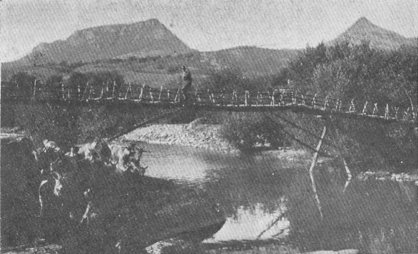
Foto Tabakoff
A homemade footbridge across a stream in the Balkan Mountains
His sentiments were shared by a less gifted but astoundingly popular writer, Aleko Constantinoff, the author of the famous book about the Bulgarian Babbitt, called "Bai Ganyou". Aleko, as he is always familiarly called, just as Whitman is Walt, not only praised the beauties of Bulgaria but urged his countrymen to explore them. He formed a little circle of nature lovers who spent almost every holiday in the mountains, and one day, in order to popularize tourism, he announced in the Sofia dailies that at sunrise on the morning of the 27th of August, 1895, a Bulgarian Touring Association would be formed on Black Rock, which is the peak of Vitosha, the mountain that looms over Sofia, and he invited all who were interested to be present. He admitted that it was a bit unusual to hold so important a meeting at such an hour in such a place but he added that any one who was not able to climb to the top of Vitosha did not deserve to be a charter member of the new Tourist Society. 300 ardent mountain climbers were there to meet him at the appointed time and most of them signed up as members of Aleko's society. That climb was no insignificant exploit either for Vitosha is 7,544 feet high and in 1895 was without roads, paths, trails and huts so that only determined and vigorous climbers could get lo the top of it in the dark. The launching of the new organization was brilliant beyond all expectation, but the working out of details did not prove so easy and four full years passed before it really got underway. It then took the name of the Bulgarian Tourist 'Association and branches were soon opened in most of the larger cities. At the beginning only persons 18 years old and with High School education were eligible to become members.
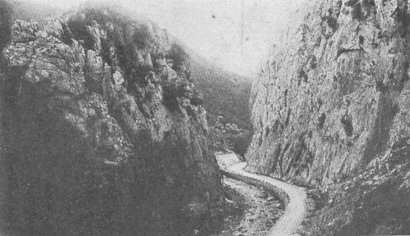
A road in the Balkan Mountains
This excluded all the boys and girls in the country, who are among the most enthusiastic and devoted hikers. So ten years later a number of High School pupils created a Young People's Tourist Association, one of the finest spontaneous creations of the youth of Bulgaria.
It originated in the city of Rouschouk on the Danube River in the form of a very small club of boys actively interested in Natural History. In the beginning the organization did not include tourism in its program and bore the name "Geologists". The principal activity of its members was to explore all the interesting rock formations near Rouschouk so as to make a scientific collection, and they gave themselves with exemplary enthusiasm to this undertaking, which must have been most pleasing to their teachers. Passing into a higher class and studying different subjects, the boys lost their interest in geology,. but not wishing to disband their organization they turned it into a Touring Society and invited their local fellow pupils to join. The response was so great and the enthusiasm created by the new movement so exuberant that the youthful initiators began to dream of a Bulgarian Youth's Tourist Federation. To be sure they had no funds and there were no other young people's touring societies anywhere in the country but those' were realities of small importance, offering no obstacles to spring time fantasies. By a romantic fiat, a Youth's Tourist Federation was brought into being and a few boys declared themselves its governing body. They borrowed a dollar from the local society, printed letter heads, drew up a constitution and began joyfully to command their non-existent army.
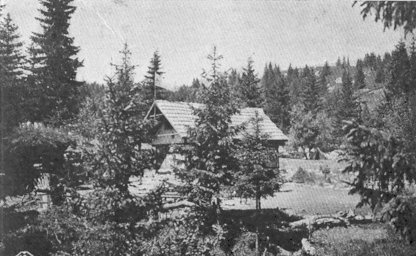
A tourists' cabin
But, strange to say, this Federation actually descended from the realm of fantasy and hopes and became a noisy, happy, active, sweaty reality. Youth's tourist societies were formed in many places, a central governing body, properly elected, began to function and in spite of three wars the movement spread to all parts of the land. In a great many cases the teachers were opposed to pupils having their own organizations, and the public in general was very skeptical of this "kids' venture". But the young tourists overcame all obstacles and have succeeded in winning the hearty support of their parents and neighbors as well as the confidence of most of their teachers.
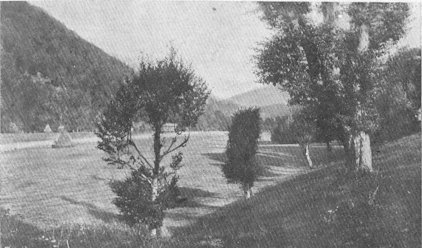
Foto Tabakoff
A valley vista in the Balkan Mountains
The two tourist federations, that of the adults and this of the young people and children have usually worked together in complete harmony, which is natural since their aims are identical. Hundreds of the members of the younger organization yearly pass up into the older one. Both have comprehensive programs. They work to inspire sentiments of patriotism and a love of outdoor life, to enable the Bulgarians to get acquainted with the beautiful places in their country and to make it easier for them to travel abroad, to 'inculcate a spirit of comradeship and self-sacrifice, to teach self-discipline, good manners and a proper regard for public property, to improve health, increase physical endurance, give instruction in hygiene and to facilitate hiking.
This last aim swallows up much of the energy and attention of the federations and gives opportunities for an extraordinary display of fidelity, devotion and self-sacrifice. When the tourist movement began in Bulgaria, there were no mountain huts, no guide books of any sort, no marked trails and no facilities of any kind for hikers. At present there are twenty huts, scattered throughout the whole of Bulgaria, and many of them are beautiful, substantial buildings. In addition, there are fourteen sleeping quarters where tourists can spend the night for almost nothing, while many of the finest, wildest trails in the country are now marked. Practically all of these improvements have been created by volunteers working out of love of nature and of their fellows. Many of the huts are found in isolated, distant gorges or on high peaks, places completely inaccessible to carts and wagons. The stones used in them have been gathered by the tourists themselves and much of the cement, bricks, tiles and even lumber carried up gullies and steep mountain sides on the backs of sweating hikers. Most of the funds necessary for these mountain refuges have also been collected by subscriptions, entertainments and fairs.
Nor are these mountain huts available only to the members of the Tourist Societies. The tourists built them for the whole nation and everyone is welcome in them as long as there is room for one more. On holidays during the hiking seasons they are all overflowing as well as the open spaces surrounding them.
In addition to these are "tourist homes" in the larger cities, containing libraries, reading rooms and halls for lectures, entertainments and theatricals as well as quarters were tourists from other places may sleep.
The Adult Tourists' Federation publishes a beautiful monthly magazine and the Youth's Federation has two: one for young people and one for children.
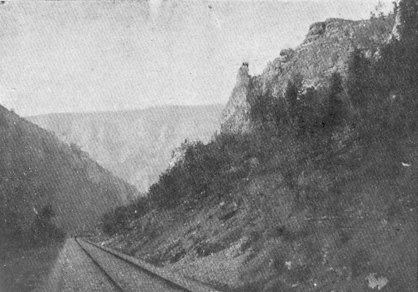
In western Bulgaria
But these associations, which have 118 branches and 20,000 members and yearly arrange hundreds of excursions, represent ut a small percent of the Bulgarian tourists. The whole nation enjoys hikes, excursions to the woods, mountains and sea and camping out in the open. The fury of football, the exclusive-ness of tennis and the formalism of the "Younack" movement rob those distractions of some of their lure and appeal, leaving trips into the woods and hills as the favorite adventure on a day of leisure.
Every spring, summer and fall the forests, deep narrow valleys, shaded river banks, flower covered hillsides, distant mountain wildernesses and austere shores of cold, blue lakes are alive with people and aquiver with song. Echoes fly from cliff to cliff and by both night and day the mountain trails leading to choice retreats, challenging heights and foaming rapids are marked by lines of carefree hikers, while the huts and the yards about them are as crowded as army camps. All the street cars leading out of town are overflowing. Woe unto any one who needs a place on a suburban line on the morning or evening of a good weather holiday. The poor and the rich are all out together with their children at their skirts and even babies in their arms. Those who are merely outing for the day find pleasant spots beside almost every city and those who have time and strength to go farther may explore dozens of deep, dark caves, visit two scores of old monasteries, loiter in dense, vast, solitary forests or pass weeks in climbing range upon range of imposing heights.. Bulgaria with its splendid natural scenery, quaint towns, picturesque peasants and ancient monasteries is a fascinating place to hike in. And the tourist societies are making it ever more accessible and attractive to foreigners.
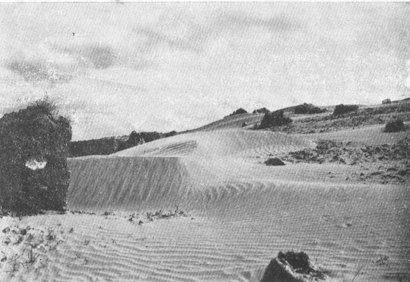
Sand dunes near the Black Sea
The new law of physical education will give an impetus to sport and outdoor exercises. It makes excursions, games and physical training obligatory for all youth both in and out of school. It requires the building of a large number of new playgrounds and provides for the training of many new teachers of games and athletic exercises. It will secure funds for better playgrounds and touring facilities from a supplementary tax on tickets for moving picture theatres. Complying with the unifying and centralizing tendencies of this law the two tourist federations will unite.
The Y. M. C. A.
Another promising and very helpful youth's organization is the Young Men's Christian Association. It was founded thirty years ago and in the beginning recruited most of its members from Protestant circles but it soon realized that it would be a fatal mistake to confine its activity to any one group or to rest under the shadow of any one church so it secured property in the center of the capital and in modest quarters started a neutral work for the good of all the people. It invites all churches and social groups to support it in carrying out the regular fourfold Y program.
Authoritative speakers from all professions and with different points of view conduct the religious meetings which are usually well attended. The educational work consists of lectures, conferences and evening courses. There are regular classes in business methods and bookkeeping, the French, German, English and Latin languages and shorthand. 2,500 people in Sofia take advantage of this branch of the Y service. From 80 to 100 boys and young men use the Y reading room daily.
The Sofia Y has 17 boys groups with 530 members in all and although handicapped by inadequate facilities and as badly overflowing as the old lady's shoe it is doing such excellent work that this activity has become the center of many youth's lives, winning the appreciation and gratitude of a large number of parents. Generally speaking the organization has more participants than it can take care of in every branch of it's work.

A group of Bulgarian'peasant boys sent by the Y to study
farming in Denmark
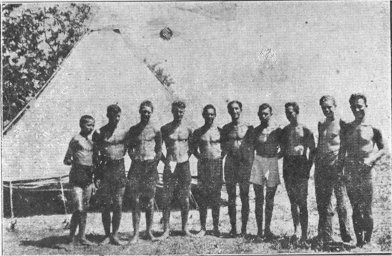
Camp leaders
One of the finest thing it is doing is to send almost every year groups of Bulgarian village boys to Denmark, where during a sojourn of two years, passed under the supervision of the Y there, they learn Danish agricultural methods and acquire some solid and wholesome Danish culture.
The most striking thing the Bulgarian Y does is to maintain during the whole summer season the best camp in the country. It is situated on the shore of the Black Sea and each year enables 350 boys to learn how to work and play happily. The applicants for places in this camp so far exceed available accommodations every year that another one is to be opened in the mountains.
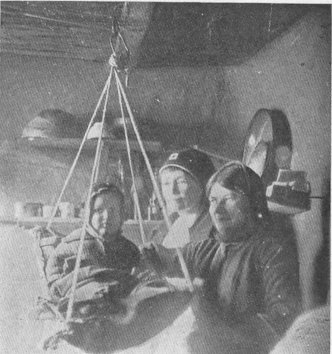
[Previous] [Next]
[Back to Index]